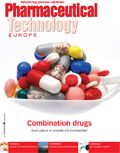Embryonic stem cells: the moral dilemma of patentability and funding
Pharmaceutical Technology Europe
Human embryonic stem cells are of immense interest to researchers because of their ability to potentially develop into any kind of tissue.
Human embryonic stem (hES) cell research is a powerful tool for yielding information about the complex events that occur during human development; in particular it allows researchers to gain a better understanding of the genetic and molecular controls of cell division and differentiation, thus providing useful information about how diseases, such as cancer and birth defects, arise. hES cells may also be used as in vitro model systems in drug discovery. However, it is believed that the most important potential for such cells is in the generation of cells and tissues that could be used for cell based therapies, and it is hoped that research into such cells will lead to therapeutic treatments to repair or replace damaged tissues, for example, in heart disease, spinal cord injuries and Parkinson's disease.
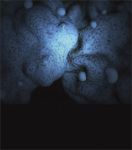
(MedicalRF.com/Getty Images)
In the US and in most Asian countries, all stem cells and their uses are patentable, whilst in Europe the situation is much less clear. While patent protection for adult stem cells rarely presents any problems, the situation is complex with respect to hES cells because they are still mainly derived from human embryos. This has also resulted in restrictions on hES cell research funding.
Europe's stance on hES cell patentability
According to the European Patent Convention (EPC), it is not possible to patent the human body at the various stages of its formation and development, or the simple discovery of one of its elements, including the sequence or partial sequence of a gene.1 Nonetheless, an element isolated from the human body or otherwise produced by means of a technical process may constitute a patentable invention, even if the structure of that element is identical to that of a natural element.
The European Patent Office (EPO) has consistently granted patents concerning adult stem cells on the basis that they are novel and non obvious isolated elements of the human body and because, so far, the patents sought have not given rise to any particular ethical controversy. The question of whether inventions concerning hES cells are patentable has not, however, been straightforward.
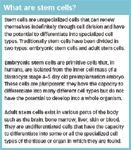
What are stem cells?
Of particular relevance is the provision in the EPC excluding from patentability inventions that are contrary to public order or morality. Specific guidance on the exact meaning of this in respect of biotechnological inventions is provided and the EPC explicitly states that it is not possible to patent:
- Processes for cloning human beings.
- Processes for modifying the germ line genetic identity of human beings.
- Uses of human embryos for industrial or commercial purposes.
It is the explicit exclusion from patentability of uses of human embryos for industrial or commercial purposes that has created the most controversy surrounding hES cells and their patentability on the grounds of public order and morality. While it is clear that patents covering methods that generate stem cells or stem cell lines through the use (i.e., destruction) of human embryos cannot be granted, the legislation is unclear on whether a stem cell itself, which has been generated by a method that destroys embryos, is excluded from patentability.
Another question raised by the above exclusion from patentability of human embryos for industrial or commercial purposes is whether uses of hES cells are patentable. One view is that the properties of hES cells are so similar to those of fertilized cells that they should be treated the same for the purposes of patentability. On that basis, hES cells should not be patentable. An opposing view is that hES cells cannot be considered as embryos because they are only pluripotent (i.e., cells that can give rise to a number of cell types, but do lack the potential to develop into an entire human body) and not totipotent (i.e., cells that have the potential to develop into an entire human body).
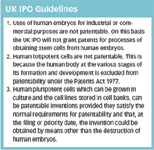
UK IPO Guidelines
The Enlarged Board of Appeal of the EPO recently had an opportunity to provide general guidance in this area in the Wisconsin Alumni Research Foundation (WARF) application,2 which sought to patent primate embryonic stem cells. It chose not to do so and instead, the Enlarged Board of Appeal stressed that its decision did not concern the general question of hES cell patentability. However, it ruled that the patenting of inventions relating to hES cells is prohibited if they can only be obtained by the destruction of human embryos. This is irrespective of whether the method involving the destruction forms part of the patent claims.
This decision is unsatisfactory because although it has not resulted in the prohibition of patents relating to hES cells, it provides no guidance on any circumstances in which hES cells will be patentable.
Patentability of hES cells in the UK
As is the case at the EPO, the Patents Act 1977 in the UK,3 as amended to implement Directive 98/44/EC of the European Parliament and of the Council of 6 July 1998 on the legal protection of biotechnological inventions,4 does not directly address whether human embryonic stem cells are patentable.
Following on from the WARF decision, the UK Intellectual Property Office (UK IPO) produced a revised practice note in February this year setting out its approach to the patentability of inventions involving hES cells. Whilst stressing that it will examine each case on its own merits in light of the relevant circumstances, the UK IPO has issued the guidelines summarized in the sidebar.
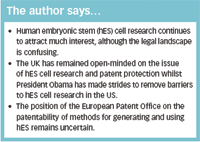
The author says...
When devising the guidelines, the UK IPO had to consider, on the one hand, the opposition in the UK to research involving embryonic stem cells, whilst on the other hand, a number of reports from influential UK political, medical and scientific bodies published in recent years that have emphasized the enormous potential of stem cell research, including embryonic stem cell research, to deliver new treatments for a wide range of serious diseases. The UK IPO came to the view that, on balance, the commercial exploitation of inventions concerning human pluripotent cells would not be contrary to public policy or morality in the UK.
The position taken by the UK IPO is welcomed as it provides firm confirmation that hES cells can, in certain circumstances, be patentable. It may be that the EPO will take the same stance, but until clear guidance is given, patentees should carefully consider whether to file patents through the national patent offices, as well as at the EPO because of potential differing interpretations of the concepts of "public order and morality".
The US approach
Although patent protection for technology involving the use of human embryos can be obtained in the US, research using embryonic stem cells has in recent years been restricted on the grounds of moral concerns as specified by President Bush's administration, which led to the banning of federal funding for hES cell research. Since that ban, hES cell research in the US had been sustained in certain States by State funding, as well as by private donations, though the source of the latter income has decreased because of the economic downturn.
In a press statement dated 9 March 2009, President Obama announced the passing of an Executive Order to lift the ban on federal funding for hES cell research (the "Executive Order")5 as it was felt that the potential offered by the research outweighed any moral concerns.
The Executive Order does not affect the general prohibition under the Dickey Wicker Amendment, which prohibits the use of federal funds for "(1) the creation of a human embryo or embryos for research purposes and (2) research in which human embryos are destroyed, discarded or knowingly subjected to risk of injury or death". This has been interpreted to prohibit funding for the creation of new hES cell lines, but not funding for research using such cells lines subsequently.
The US National Institute of Health has now been tasked with drafting guidelines (the "draft Guidelines") to implement the Executive Order. These guidelines would allow funding for research using hES cells that were derived from embryos created by in vitro fertilization for reproductive purposes and that were no longer needed for that purpose. Funding would also continue to be allowed for human stem cell research using adult stem cells and induced pluripotent stem cells. At the time of writing this article, the finalized guidelines have not yet been published, but are expected imminently.
Concern has been raised that the draft Guidelines as currently worded might actually restrict funding of hES cell research more than during the Bush administration. The issue is the informed consent requirements for women who donated eggs left unused during fertility treatments and which were eventually used to generate embryonic stem cells. If the guidelines are applied retrospectively to cells lines, the majority would not comply with the informed consent requirements.
The Executive Order should result in an increase in the level of research conducted on hES cells in the US, although certain barriers still exist such as the fact that another Executive Order currently prohibits federal dollars being used to create new stem cell lines. This initiative may also divert funds away from ongoing research in adult stem cells and induced pluripotent cells unless the federal budget for research in this area is increased.
Concluding remarks
There continues to be a moral dilemma regarding the use of hES cells for research, which researchers say could deliver groundbreaking medical treatments. Whilst the UK remains open to research and patent protection relating to hES cells, subject to certain caveats, and President Obama has taken steps to remove barriers for research in the US, the position regarding patent protection at the EPO remains uncertain.
Acknowledgement
The author would like to thank Andreas Grundlehner of Frey & Jud for the use of his University of Cambridge Master's in Bioscience Enterprise dissertation entitled "The Patenting of Stem Cells: The Current Status and its Implications for Commercial Exploitation" in researching this article.
Beatriz San Martín is a solicitor in the IP department at Field Fisher Waterhouse and is a member of the Life Sciences & Healthcare group. She is also a member of Pharmaceutical Technology Europe's Editorial Advisory Board. Tel. +44 207 861 4000 Beatriz.SanMartin@ffw.com
References
1. European Patent Convention, Rule 29 of the Implementing Regulations to the Convention on the Grant of European Patents (2000). www.epo.org
2. European Patent Convention, "No European patent for WARF/Thomson stem cell application" (November 2008). www.epo.org
3. UK Intellectual Property Office, The Patents Act 1977 (as amended) (December 2008). http://webdb2.patent.gov.uk
4. EUR-Lex — Directive 98/44/EC of the European Parliament and of the Council of 6 July 1998 on the legal protection of biotechnological inventions (July 1998). http://eur-lex.europa.eu
5. Executive Order 13505 (9 March 2009). www.whitehouse.gov
